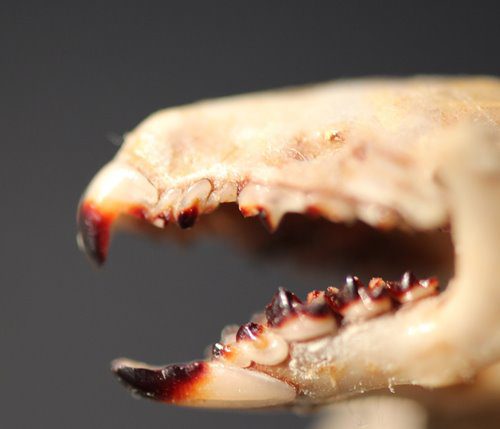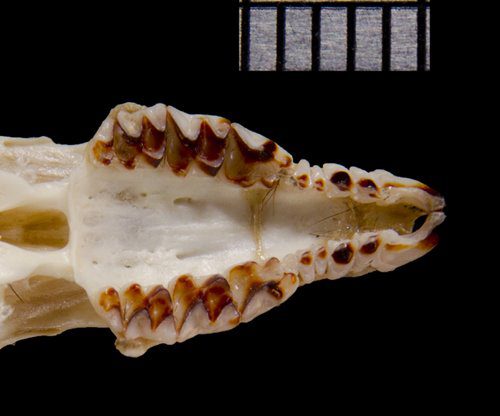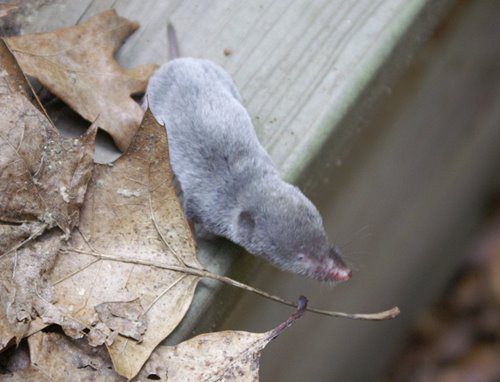
The other day Erin Cashion and I were looking at the skull of this small critter and Erin said “You know, this would make a good Freak of the Week”. So here it is! The photo below shows the toothrows of the skull. The scale in this photo is in millimeters, and thus the total length of the skull of this species is less than one inch. This is not some exotic animal from far away but it lives right here in Ohio! So what animal is this and why does it have stained teeth!?

Answer:
Several people knew that these stained teeth belonged to a shrew. This is one of those things in nature that once you’ve seen it, you never forget it! This is especially true for Rochelle. When we worked together in Montana she single-handedly cataloged thousandsof shrew specimens. She’d probably like to forget shrews but probably never will!
So what is a shrew? Some people see this small mammal and assume it’s a rodent, but it’s actually quite different. Shrews are in the mammal Order Soricomorpha, formerly part of the old Order Insectivora, but are still commonly known as “insectivores”. Their diet does indeed include a lot of insects, but they also eat worms, snails, seeds, fungi and even other small vertebrates. They have a voracious appetite and will eat close to their own body weight in food every day. I’ve talked to researchers who have live-trapped shrews but find that the one surviving shrew in the trap has consumed the other individuals! Compare our common Short-tailed Shrew to the beautiful native mouse, the White-footed Mouse (photos). Mice are in the mammal Order Rodentia.
The Short-tailed Shrew is unusual, even in the freaky world of shrews, because it is one of the few mammals that is venomous! It’s salivary glands produce a toxin which the shrew uses to help subdue prey species such as worms and small vertebrates! The toxin can kill small animals and can deliver a painful bite to humans who try to handle the animal. The toxin flows along a groove formed by the lower incisors and is injected into the prey when bitten.

Photo by Jamie McCarthy